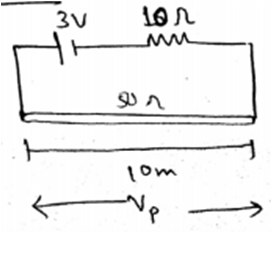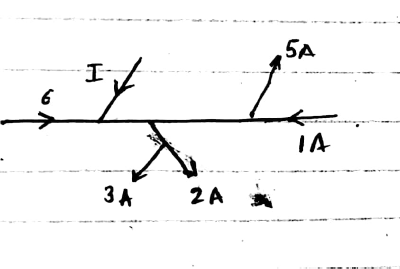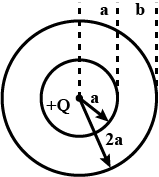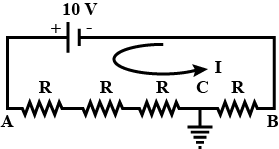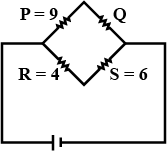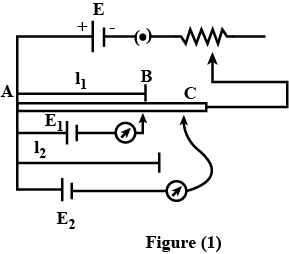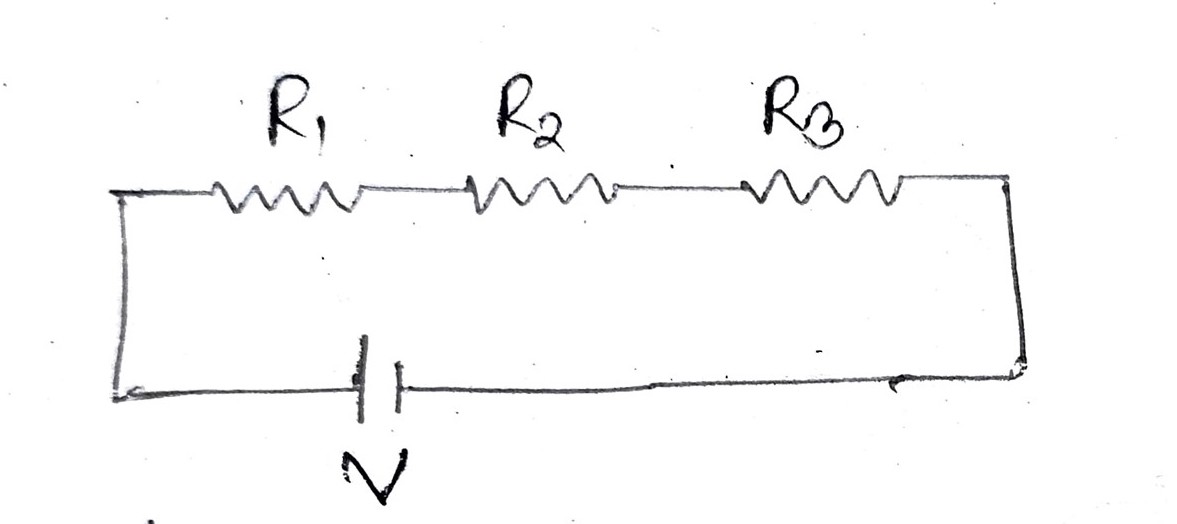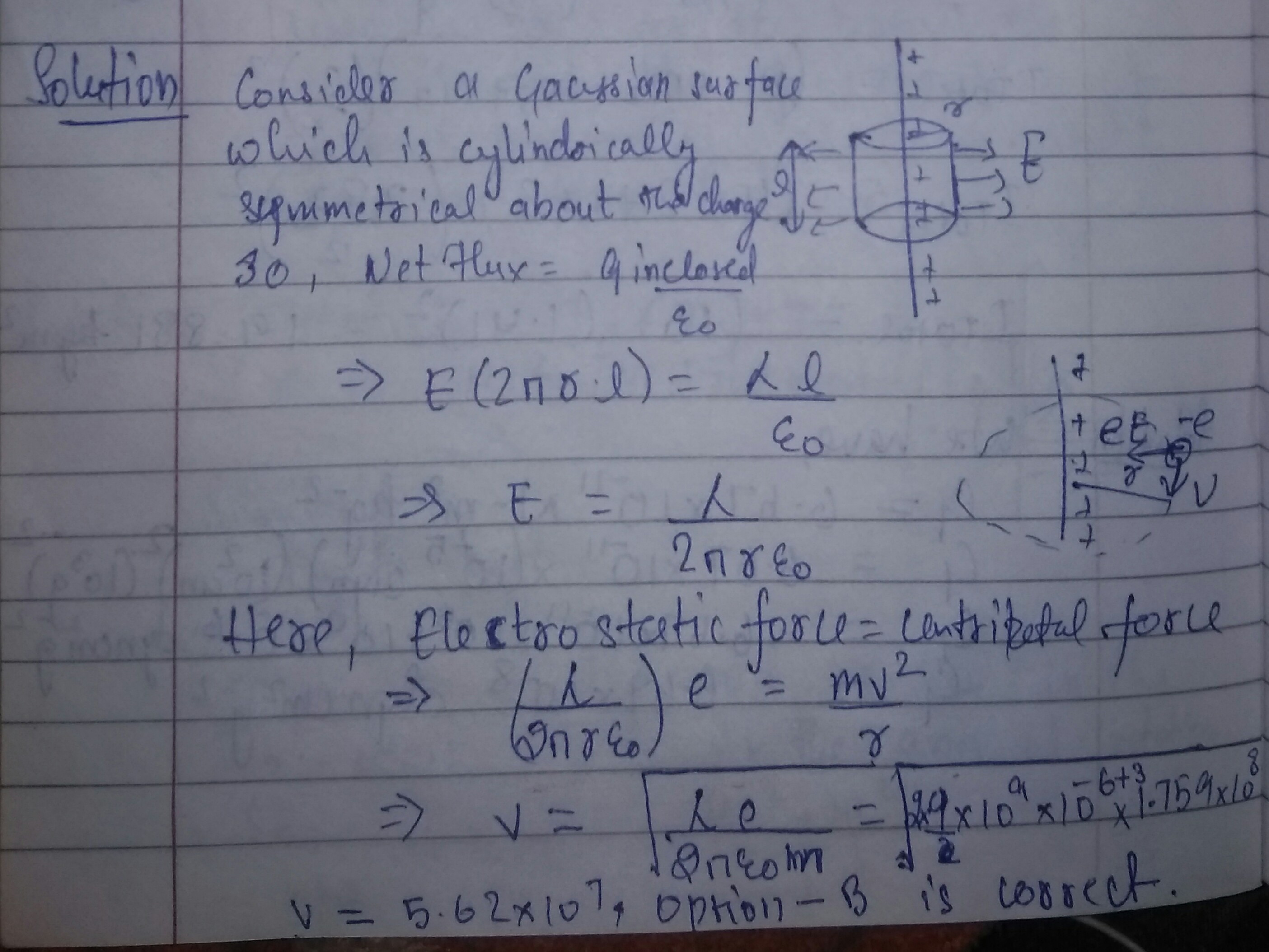-
0%
$$2.9$$ $$volt$$
-
0%
$$13.3$$ $$volt$$
-
0%
$$10.04$$ $$volt$$
-
0%
$$zero\ volt$$
-
0%
$$750$$ watt
-
0%
$$500$$ watt
-
0%
$$250$$ watt
-
0%
$$1000$$ watt
-
0%
$$0.02V$$
-
0%
$$0.1V$$
-
0%
$$0.06V$$
-
0%
$$1.2V$$
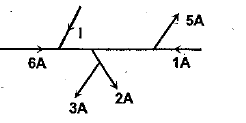
-
0%
$$1A$$
-
0%
$$3A$$
-
0%
$$2A$$
-
0%
$$4A$$
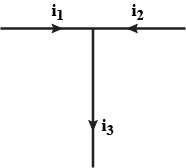
-
0%
$$5\sin{(\omega t+{53}^{o})}$$
-
0%
$$5\sin{(\omega t+{37}^{o})}$$
-
0%
$$5\sin{(\omega t+{45}^{o})}$$
-
0%
$$5\cos{(\omega t+{53}^{o})}$$
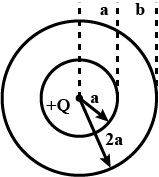
-
0%
$$-5Q$$
-
0%
$$+3Q$$
-
0%
$$-4Q$$
-
0%
$$+4Q$$
Consider a cube as shown in the fig-1; with uniformly distributed charge within its volume. The potential at one of its vertex P is $${V_0}$$.A cubical portion of half the size (half edge length) of the original cube is cut and removed as shown in the fig-Find the modulus of potential at the point P in the new structure.
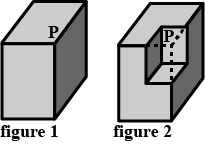
-
0%
$${{7} \over 8}{V_0}$$
-
0%
$${{{V_0}} \over 2}$$
-
0%
$${{3{V_0}} \over 4}$$
-
0%
$${{{V_0}} \over 4}$$
-
0%
$$786\ kV$$
-
0%
$$440\ kV$$
-
0%
$$220\ kV$$
-
0%
$$157.1\ kV$$
A potentiometer has a wire of 100 cm length and its resistance is 10 ohms. It is connected in series with a resistance of 40 ohms and a battery of emf 2 V and negligible internal resistance. If a source of unknown emf E connected in the secondary is balanced by 40 cm length of potentiometer wire, the value of E is:
-
0%
0.2 V
-
0%
0.4 V
-
0%
0.08 V
-
0%
0.16 V
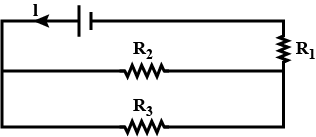
-
0%
$$4P$$
-
0%
$$7P$$
-
0%
$$13P$$
-
0%
$$17P$$
-
0%
$$790\ ohm$$
-
0%
$$810\ ohm$$
-
0%
$$990\ ohm$$
-
0%
$$1000\ ohm$$
-
0%
1154K
-
0%
1100K
-
0%
1400K
-
0%
1127K
For the following circuits, the potential difference between
X and Y in volt is $$\left( {{V_x} - {V_y}} \right)$$
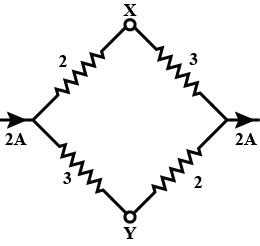
-
0%
1
-
0%
-1
-
0%
2
-
0%
-2
A charged glass road attract a charged plastic straw
-
0%
True
-
0%
False
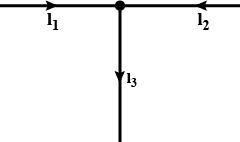
-
0%
$$5A sin (\omega t + 53^0)$$
-
0%
$$5A sin (\omega t + 37^0)$$
-
0%
$$5A sin (\omega t + 45^0)$$
-
0%
$$5A sin (\omega t + 30^0)$$
ohm$$ resistor is:
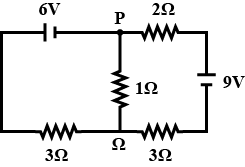
-
0%
$$ 0.13A, $$ from Q to P
-
0%
$$0.13A, $$ from P to Q
-
0%
$$ 1.3A, $$ from P to Q
-
0%
$$ 0A, $$

-
0%
Stable for vertical displacements
-
0%
Neutral for vertical displacements
-
0%
Stable for horizontal displacements (parallel to the wire)
-
0%
Neutral for horizontal displacements (parallel to the wire)
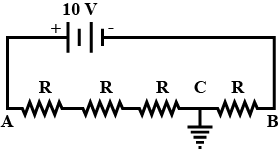
-
0%
$$V_A = + 10 \ V; V_B = 0 \ V$$
-
0%
$$V_A = + 7.5 \ V; V_B = - 2.5 \ V$$
-
0%
$$V_A = + 2.5 \ V; V_B = - 7.5 \ V$$
-
0%
$$V_A = + 0 \ V; V_B = - 10 \ V$$
-
0%
Remains same
-
0%
Four times
-
0%
One fourth
-
0%
Half

-
0%
Potential difference across $$AB$$ is $$48 V$$
-
0%
Electromotive force device is $$48 V$$.
-
0%
Point $$B$$ is connected to the positive terminal of $$E$$.
-
0%
Rat of conversion from electrical to chemical energy is $$48 W$$ in device $$E$$.
-
0%
Zero
-
0%
$$\frac{q^2}{{\pi { \in _0}\sqrt 5 }}$$
-
0%
$$\frac{{2{Q^2}}}{{\pi { \in _0}}}$$
-
0%
$$\frac{{5{Q^2}}}{{4\pi { \in _0}}}$$
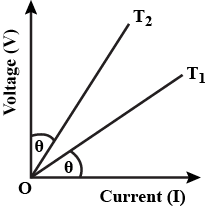
-
0%
$$\cos 2\theta$$
-
0%
$$\sin 2\theta$$
-
0%
$$\cot 2\theta$$
-
0%
$$\tan 2\theta$$
-
0%
$$35 \ \Omega$$
-
0%
$$4 \ \Omega$$
-
0%
$$2.9 \ \Omega$$
-
0%
$$3.1\ \Omega$$
-
0%
emf of the cell.
-
0%
Potential gradient of the wire.
-
0%
When switch S is closed, will null point moves towards p or Q?
-
0%
insufficient data
-
0%
Deflection method
-
0%
Zero deflection method
-
0%
Both (a) and (b)
-
0%
None of these
-
0%
$$R = \dfrac{r}{2}$$
-
0%
$$R = r$$
-
0%
$$R = 2r$$
-
0%
$$R = 0$$
-
0%
$$90 \ cm$$
-
0%
$$60 \ cm$$
-
0%
$$50 \ cm$$
-
0%
$$75 \ cm$$
-
0%
The electromotive force system of the standard cell is larger than the $$E$$ electromotive force system of the two cells.
-
0%
The diameter of the wires is the same and uniform throughout
-
0%
The number of wires is ten
-
0%
The electromotive force of the standard cell is smaller than the electromotive force of the two cells.
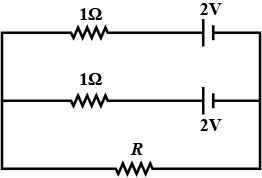
-
0%
$$2 W$$
-
0%
$$3.2 W$$
-
0%
$$8,2 W$$
-
0%
$$4 W$$
-
0%
$$\frac{{2e}}{n}$$
-
0%
$$\dfrac{n \space e}{nR + r}$$
-
0%
$$\dfrac{e}{R + nr}$$
-
0%
$$\dfrac{n \space e}{R + r}$$
-
0%
$$48.4 W$$
-
0%
$$24.2 W$$
-
0%
$$12.1 W$$
-
0%
ZERO
-
0%
$$20W$$
-
0%
$$40W$$
-
0%
$$40\sqrt { 2 }W$$
-
0%
Zero

-
0%
$$\dfrac{8}{3}\Omega $$
-
0%
$$\dfrac{16}{3}\Omega $$
-
0%
$$\dfrac{15}{7}\Omega $$
-
0%
$$\dfrac{19}{2}\Omega $$
-
0%
$$0.01$$
-
0%
$$0.02$$
-
0%
$$0.03$$
-
0%
$$0.05$$
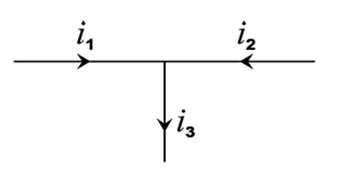
-
0%
$$5\sin \left( {\omega t + {{53}^ \circ }} \right)$$
-
0%
$$5\sin \left( {\omega t + {{37}^ \circ }} \right)$$
-
0%
$$5\sin \left( {\omega t + {{45}^ \circ }} \right)$$
-
0%
$$5\cos \left( {\omega t - {{53}^ \circ }} \right)$$
-
0%
$$24$$ ohm
-
0%
$$13.5$$ ohm
-
0%
$$7.2$$ ohm
-
0%
$$18.7$$ ohm
A circular coil of area $$8{m^2}$$ and number of turns 20 is placed in a magnetic field of 2T with its plane perpendicular to it. It is rotated with an angular velocity of 20rev/s about its natural axis. The emf induced is
-
0%
$$400 V$$
-
0%
$$800\pi V$$
-
0%
$$Zero$$
-
0%
$$400\pi V$$
circuit is zero, then
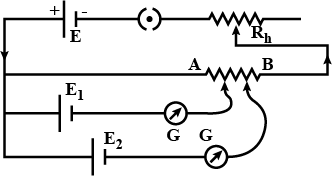
-
0%
$${E_1} > {E_2}$$
-
0%
$${E_2} > {E_1}$$
-
0%
$${E_1} = {E_2}$$
-
0%
$${E_1} + {E_2} = E$$
-
0%
$$500^{0}C$$
-
0%
$$450^{0}C$$
-
0%
$$600^{0}C$$
-
0%
None of these
-
0%
$$\sqrt{\dfrac{Ne}{m\epsilon}}$$
-
0%
$$\sqrt{\dfrac{me}{N\epsilon}}$$
-
0%
$$\sqrt{\dfrac{Ne^2}{m\epsilon}}$$
-
0%
$$\sqrt{\dfrac{Ne^3}{m\epsilon}}$$
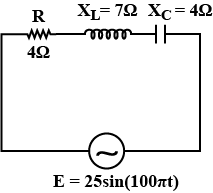
-
0%
3.75 A
-
0%
5 A
-
0%
2.1 A
-
0%
zero
-
0%
$$I_1=I_2=I_3$$
-
0%
$$I_1> I_2> I_3$$
-
0%
$$I_1< I_2< I_3$$
-
0%
$$I_1> I_2< I_3$$
-
0%
$$2 \times 10^4 V$$
-
0%
$$1.2 \times 10^4 V$$
-
0%
$$2 \times 10^{-4} V$$
-
0%
None of these
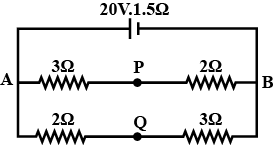
-
0%
$$Zero $$
-
0%
$$4\ volt\ \left({V}_{p}>{V}_{Q}\right)$$
-
0%
$$4\ volt\ \left({V}_{Q}>{V}_{P}\right)$$
-
0%
$$2.5\ volt\ \left({V}_{Q}>{V}_{P}\right)$$

-
0%
1 calorie
-
0%
2 calorie
-
0%
3 calorie
-
0%
4 calorie
-
0%
$$ 0.562 \times 10^7 $$
-
0%
$$ 5.62 \times 10^7 $$
-
0%
$$ 562 \times 10^7 $$
-
0%
$$ 0.0562 \times 10^7 $$
-
0%
$$90$$%
-
0%
$$75$$%
-
0%
$$60$$%
-
0%
$$50$$%
-
0%
Germanium
-
0%
Silicon
-
0%
Silver
-
0%
None
-
0%
1154 K
-
0%
1100 K
-
0%
600 K
-
0%
1400 K
-
0%
Ampere-hour meter
-
0%
Watt-hour meter
-
0%
Var-hour meter
-
0%
Volt-ampere meter
